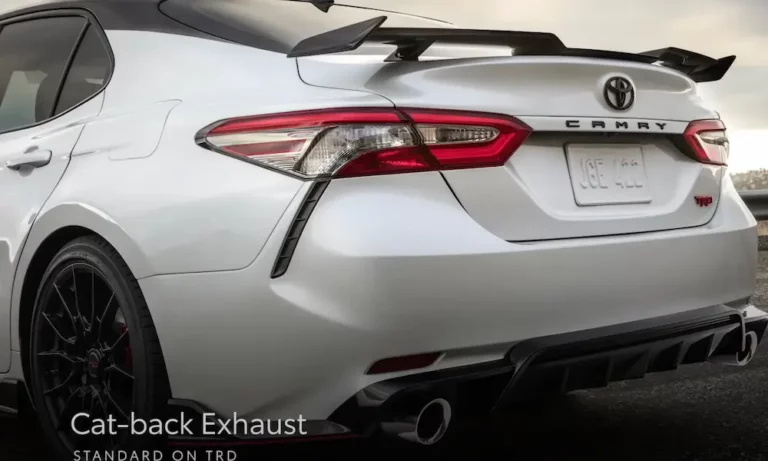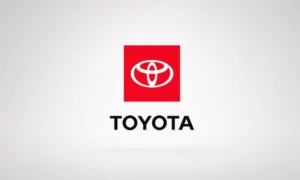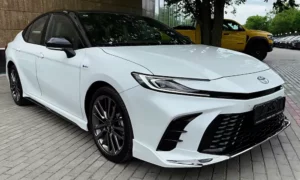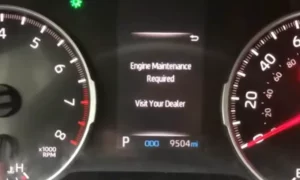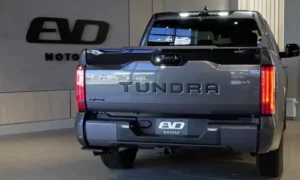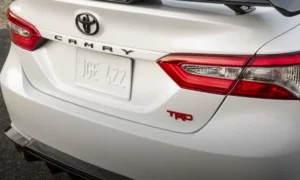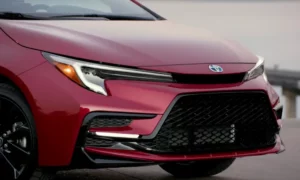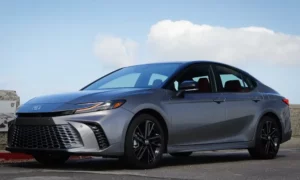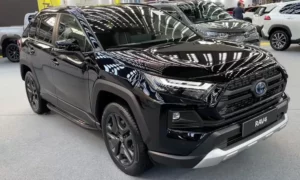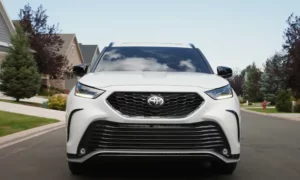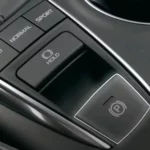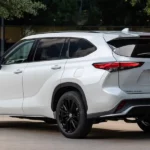Is your Toyota Camry giving you the cold shoulder this morning? Few things are more frustrating than turning your key and hearing… absolutely nothing. Your reliable ride suddenly refusing to start can really throw a wrench in your day.
Let’s walk through the most common reasons why your Toyota Camry won’t start and how to fix them. With some basic troubleshooting, you might save yourself a tow truck call and an expensive repair bill.
Battery Problems: The Most Common Culprit
When your Camry won’t start, your battery is usually the first suspect. Even if your dashboard lights and radio turn on (which only need about 12 volts), your starter might not be getting the cold cranking amps it needs to turn over the engine.
How to Check Your Battery
- Look for corrosion: White or greenish buildup on your battery terminals blocks electrical flow. Clean them with a wire brush and baking soda solution.
- Test the voltage: Using a multimeter, check if your battery reads between 12.6-12.8 volts when the engine is off. Anything below 12.4V suggests a weak battery.
- Load test: While voltage tests show static power, a load test measures performance under strain. Most auto parts stores will do this test for free.
Quick Fixes for Battery Issues
- Jump-start your car: Connect jumper cables correctly (red to positive, black to negative) from a running vehicle to yours.
- Tighten loose connections: Ensure your battery terminals are snug. Loose connections are sometimes mistaken for dead batteries.
- Replace aging batteries: Batteries typically last 3-5 years. If yours is older, replacement might be your best option.
Starter Motor Problems: When You Hear Clicks But No Action
If your battery checks out but your Camry still won’t start, the starter motor might be the issue. The starter motor converts electrical energy from your battery into the mechanical motion needed to crank the engine.
Signs of Starter Failure
- Single click: You turn the key and hear one distinct click, but the engine doesn’t turn over
- Grinding noise: A harsh grinding sound during starting attempts
- Intermittent starting: Sometimes it works, sometimes it doesn’t
- Smoke: Visible smoke from the starter area during start attempts
Testing Your Starter
The “tap test” can temporarily confirm a failing starter. With the key in the start position (and someone helping), gently tap the starter motor with a hammer or wrench. If the car starts, your starter is definitely failing and needs replacement.
In a 2017 Camry, some owners discovered broken solenoid wire harnesses that prevented the starter from engaging despite hearing the click.
Fuel System Issues: When It Cranks But Won’t Start
If your engine cranks normally but doesn’t start, you might have a fuel delivery problem. Without proper fuel reaching the engine, combustion can’t occur.
Common Fuel System Problems
- Fuel pump failure: Listen for a humming sound from the rear of your car when you turn the key to “ON” (not starting). No sound might mean a dead fuel pump.
- Clogged fuel filter: A restricted filter prevents enough fuel from reaching the engine.
- Fuel injector issues: Dirty or failing injectors can’t spray fuel correctly.
If you suspect a fuel pump issue, try this test: While someone cranks the engine, spray a small amount of starter fluid into the intake. If the engine fires briefly, you likely have a fuel delivery problem.
Ignition System and Security Problems
Modern Toyota Camrys have sophisticated security systems that can sometimes prevent starting even when mechanical systems are working perfectly.
Security System Checks
- Try your spare key: A damaged chip in your primary key might be the problem
- Check for security light: A blinking security light on your dash might indicate the immobilizer is activated
- Battery disconnect: In some cases, disconnecting the battery for 15 minutes can reset security glitches
A 2014 Camry owner discovered their no-start condition was related to security system problems, not mechanical issues. The car had clean battery terminals but still wouldn’t crank.
ECU and Sensor Failures
Your Camry’s Engine Control Unit (ECU) is the brain that coordinates everything. If it or its sensors fail, starting problems follow.
Critical Sensors That Prevent Starting
- Crankshaft position sensor: Without this data, the ECU doesn’t know when to fire spark plugs or inject fuel.
- Camshaft position sensor: Provides timing data essential for engine operation.
- Throttle position sensor: Tells the ECU how much fuel to deliver.
Use an OBD-II scanner to check for error codes that might point to specific sensor failures. For example, code P0335 indicates a crankshaft position sensor problem.
Special Considerations for Hybrid Camrys
If you have a Camry Hybrid, your starting system works differently than conventional models.
Hybrid-Specific Starting Issues
- Auxiliary 12V battery failure: Hybrid models have a separate 12V battery that powers electronics and initiates the starting sequence. This battery can die even if your main hybrid battery is fine.
- System initialization problems: Sometimes a simple reset procedure can solve starting issues.
- Shift position issues: Ensure your car is fully in Park position, as hybrids have additional safety interlocks.
In a 2011 Camry Hybrid, no-crank scenarios were often traced to the auxiliary 12V battery failing, despite the main hybrid battery having plenty of charge.
Diagnostic Table: What Various Symptoms Mean
| Symptom | Most Likely Causes | First Check |
|---|---|---|
| No lights, no sounds | Dead battery, main fuse | Battery voltage, fuse box |
| Lights on, single click | Weak battery, starter solenoid | Battery load test, starter connections |
| Lights on, repeated clicking | Weak battery, bad connection | Clean and tighten terminals |
| Normal cranking, no start | Fuel system, ignition system | Fuel pressure, spark test |
| Cranking slower than normal | Weak battery, failing starter | Battery age, starter condition |
| Car starts then dies | Fuel pump, alternator, sensors | Fuel pressure, charging system |
DIY Troubleshooting Steps for Any Toyota Camry
Follow this systematic approach to narrow down why your Camry won’t start:
Step 1: Check Electrical Systems
- Basic power check: Are your headlights bright? Do interior lights work?
- Battery terminals: Clean and tight?
- Battery age: More than 3-5 years old? Consider replacement.
- Connections: Follow battery cables to ensure they’re secure.
Step 2: Listen to What Your Car Tells You
- Nothing happens: Likely electrical issue (battery, connection, ignition switch)
- Clicking sound: Starter solenoid engaging but motor not turning
- Grinding noise: Starter gear not engaging properly
- Engine cranks normally but won’t start: Fuel or ignition issue
Step 3: Fuel System Verification
- Listen for fuel pump: Turn key to “ON” position and listen for 2-second hum from rear of car
- Smell for fuel: Excessive fuel smell might indicate flooding
- Check fuel gauge: Empty tank? (Sometimes gauges fail)
Step 4: Advanced Testing
- Spark test: Remove a spark plug, connect it to its wire, ground it against engine, and check for spark while cranking
- Fuel pressure test: Connect gauge to fuel rail to verify correct pressure
- Compression test: Verifies engine’s mechanical condition
Model-Specific Starting Issues
Different Camry model years have their own common starting problems:
2007-2011 Camry
These models often experience starter motor issues due to worn brushes or commutators. Owners report intermittent starting that gets progressively worse until the starter fails completely.
2012-2017 Camry
Security system glitches are more common in these years. A malfunctioning immobilizer can prevent starting even with a good battery and starter. Trying multiple keys and potential security system resets may help.
2018+ Camry
Newer models have more sophisticated electronics but can experience relay failures. A 2019 Camry SE with intermittent starting problems was fixed by replacing the starter relay – a relatively inexpensive part prone to contact corrosion.
Preventative Maintenance to Avoid Future Starting Problems
Keep your Toyota Camry starting reliably with these maintenance tips:
- Regular battery checks: Test your battery annually after the 3-year mark.
- Clean connections: Remove and clean battery terminals every 6-12 months.
- Fuel system maintenance: Use quality fuel and add injector cleaner occasionally.
- Address warning signs early: Slow cranking is usually a warning of impending failure.
- ECU updates: Ensure your car’s computer has the latest firmware from Toyota.
- Regular oil changes: Engine sludge can cause mechanical issues that prevent starting.
Cost Comparison: DIY vs. Professional Repairs
| Repair | DIY Cost | Shop Cost | Skill Level | Time Required |
|---|---|---|---|---|
| Battery replacement | $100-150 | $150-200 | Beginner | 30 minutes |
| Clean battery terminals | $5 | $25-50 | Beginner | 15 minutes |
| Starter replacement | $150-250 | $400-600 | Intermediate | 1-2 hours |
| Fuel pump replacement | $200-350 | $600-1000 | Advanced | 2-4 hours |
| Ignition switch | $50-100 | $200-350 | Intermediate | 1 hour |
| Crankshaft sensor | $30-80 | $200-300 | Intermediate | 1 hour |
Electrical Testing Essentials
Proper electrical testing can save you time and money by identifying the exact starting problem:
- Voltage drop testing: This crucial test checks for hidden resistance in your starting circuit. Connect your multimeter between the battery terminal and cable end while cranking. More than 0.5V drop indicates a connection problem.
- Alternator output test: After jump-starting, a healthy alternator should show 13.8-14.4V at the battery with the engine running.
- Parasitic drain test: If your battery keeps dying overnight, use an ammeter to check for excessive current draw when the car is off. Anything over 50 milliamps could be draining your battery.
Remember that electrical problems often masquerade as other issues. A 2018 Camry owner found that despite all electrical components working, a poor connection at the battery negative terminal was preventing the car from starting.
By working through these steps systematically, you’ll likely identify why your Toyota Camry won’t start. For most DIYers, battery and connection issues are easily fixable at home, while starter replacement is within reach for those with some mechanical experience. More complex issues like fuel system or ECU problems might require professional diagnosis.

